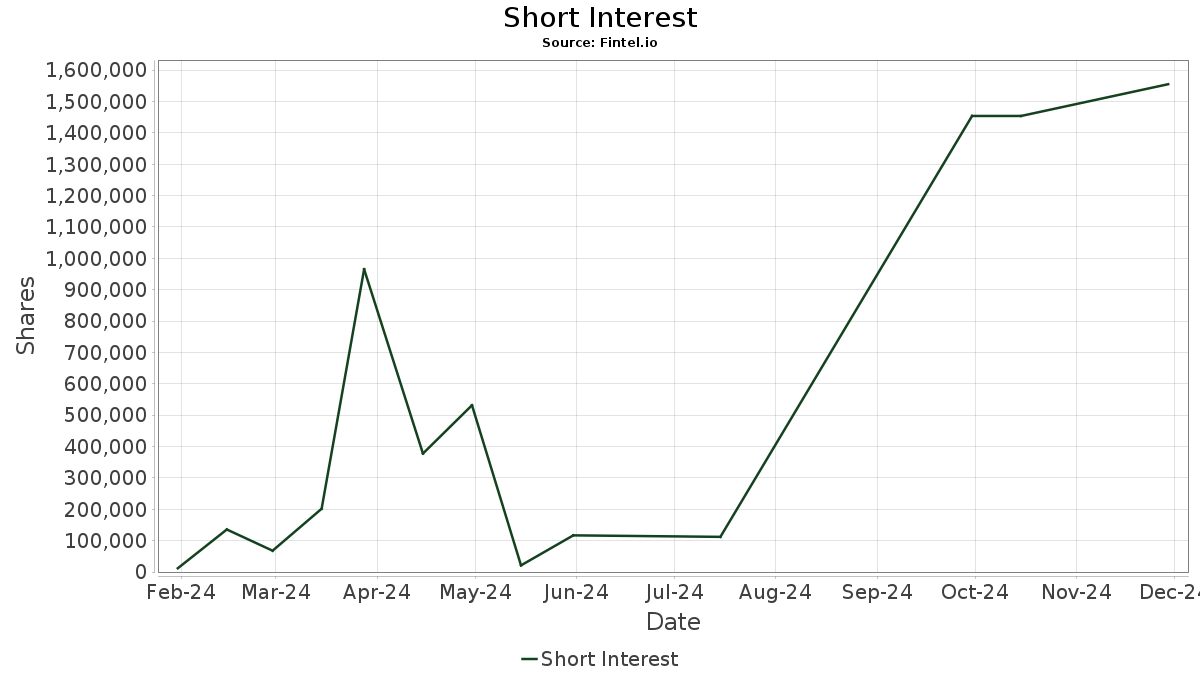Dy Short Interest
Posted : admin On 4/5/2022Dycom Industries, Inc. (NYSE:DY) is not the least popular stock in this group but hedge fund interest is still below average. Our overall hedge fund sentiment score for DY is 27. Short Interest Dividends Per Share Dividend Yield Ex-Div Date Insider B/S Insider% Owned - $ - 0.00%.
Dy Short Interest Calculator
- The high price target for DY is $97.00 and the low price target for DY is $35.00. There are currently 1 hold rating and 7 buy ratings for the stock, resulting in a consensus rating of 'Buy.'
- All-In-One Screener Buffett-Munger Screener Industry Overview Undervalued Predictable Benjamin Graham Net-Net 52-week/3Y/5Y Lows 52-week/3Y/5Y Highs Magic Formula(Greenblatt) Dividend Stocks Peter Lynch Screen S&P500 Grid Predictable Companies Spin Off List Historical Low P/B List Historical Low P/S List High Short Interest Upcoming Special.
Definition of Exact Equation
A differential equation of type
[{Pleft( {x,y} right)dx + Qleft( {x,y} right)dy }={ 0}]
is called an exact differential equation if there exists a function of two variables (uleft( {x,y} right)) with continuous partial derivatives such that
[{duleft( {x,y} right) text{ = }}kern0pt{ Pleft( {x,y} right)dx + Qleft( {x,y} right)dy.}]
The general solution of an exact equation is given by
[uleft( {x,y} right) = C,]
where (C) is an arbitrary constant.
Test for Exactness
Let functions (Pleft( {x,y} right)) and (Qleft( {x,y} right)) have continuous partial derivatives in a certain domain (D.) The differential equation (Pleft( {x,y} right)dx +) ( Qleft( {x,y} right)dy ) (= 0) is an exact equation if and only if
[frac{{partial Q}}{{partial x}} = frac{{partial P}}{{partial y}}.]

Algorithm for Solving an Exact Differential Equation
- First it’s necessary to make sure that the differential equation is exact using the test for exactness:[frac{{partial Q}}{{partial x}} = frac{{partial P}}{{partial y}}.]
- Then we write the system of two differential equations that define the function (uleft( {x,y} right):)[left{ begin{array}{l}frac{{partial u}}{{partial x}} = Pleft( {x,y} right)frac{{partial u}}{{partial y}} = Qleft( {x,y} right)end{array} right..]
- Integrate the first equation over the variable (x.) Instead of the constant (C,) we write an unknown function of (y:)[{uleft( {x,y} right) text{ = }}kern0pt{ int {Pleft( {x,y} right)dx} + varphi left( y right).}]
- Differentiating with respect to (y,) we substitute the function (uleft( {x,y} right))into the second equation:[{frac{{partial u}}{{partial y}} text{ = }}kern0pt{frac{partial }{{partial y}}left[ {int {Pleft( {x,y} right)dx} + varphi left( y right)} right] }= {Qleft( {x,y} right).}]From here we get expression for the derivative of the unknown function ({varphi left( y right)}:)[{varphi’left( y right) }= {Qleft( {x,y} right) }-{ frac{partial }{{partial y}}left( {int {Pleft( {x,y} right)dx} } right).}]
- By integrating the last expression, we find the function ({varphi left( y right)}) and, hence, the function (uleft( {x,y} right):)[{uleft( {x,y} right) text{ = }}kern0pt{ int {Pleft( {x,y} right)dx} + varphi left( y right).}]
- The general solution of the exact differential equation is given by
Note:
In Step (3,) we can integrate the second equation over the variable (y) instead of integrating the first equation over (x.) After integration we need to find the unknown function ({psi left( x right)}.)

Solved Problems
Click or tap a problem to see the solution.

Example 1
Solve the differential equation (2xydx +) ( left( {{x^2} + 3{y^2}} right)dy ) (= 0.)Example 2
Find the solution of the differential equation (left( {6{x^2} – y + 3} right)dx +) ( left( {3{y^2} – x – 2} right)dy ) (= 0.)Example 3
Solve the differential equation ({e^y}dx +) (left( {2y + x{e^y}} right)dy ) (= 0.)Example 4
Solve the equation (left( {2xy – sin x} right)dx +) ( left( {{x^2} – cos y} right)dy ) (= 0.)Example 5
Solve the equation (left( {1 + 2xsqrt {{x^2} – {y^2}} } right)dx -) ( 2ysqrt {{x^2} – {y^2}} dy ) (= 0.)Example 6
Solve the differential equation ({largefrac{1}{{{y^2}}}normalsize} – {largefrac{2}{x}normalsize} =) ( {largefrac{{2xy’}}{{{y^3}}}normalsize}) with the initial condition (yleft( 1 right) = 1.)Example 1.
Solve the differential equation (2xydx +) ( left( {{x^2} + 3{y^2}} right)dy ) (= 0.)
Solution.
The given equation is exact because the partial derivatives are the same:
[
{{frac{{partial Q}}{{partial x}} }={ frac{partial }{{partial x}}left( {{x^2} + 3{y^2}} right) }={ 2x,;;}}kern-0.3pt
{{frac{{partial P}}{{partial y}} }={ frac{partial }{{partial y}}left( {2xy} right) }={ 2x.}}
]
We have the following system of differential equations to find the function (uleft( {x,y} right):)
[left{ begin{array}{l}frac{{partial u}}{{partial x}} = 2xyfrac{{partial u}}{{partial y}} = {x^2} + 3{y^2}end{array} right..]
Dy Short Interest Meaning
By integrating the first equation with respect to (x,) we obtain
[{uleft( {x,y} right) = int {2xydx} }={ {x^2}y + varphi left( y right).}]
Substituting this expression for (uleft( {x,y} right)) into the second equation gives us:
[
{{frac{{partial u}}{{partial y}} }={ frac{partial }{{partial y}}left[ {{x^2}y + varphi left( y right)} right] }={ {x^2} + 3{y^2},;;}}Rightarrow
{{{x^2} + varphi’left( y right) }={ {x^2} + 3{y^2},;;}}Rightarrow
{varphi’left( y right) = 3{y^2}.}
]
By integrating the last equation, we find the unknown function ({varphi left( y right)}:)
[varphi left( y right) = int {3{y^2}dy} = {y^3},]
so that the general solution of the exact differential equation is given by
Dy Short Interest Rates
[{x^2}y + {y^3} = C,]
where (C) is an arbitrary constant.